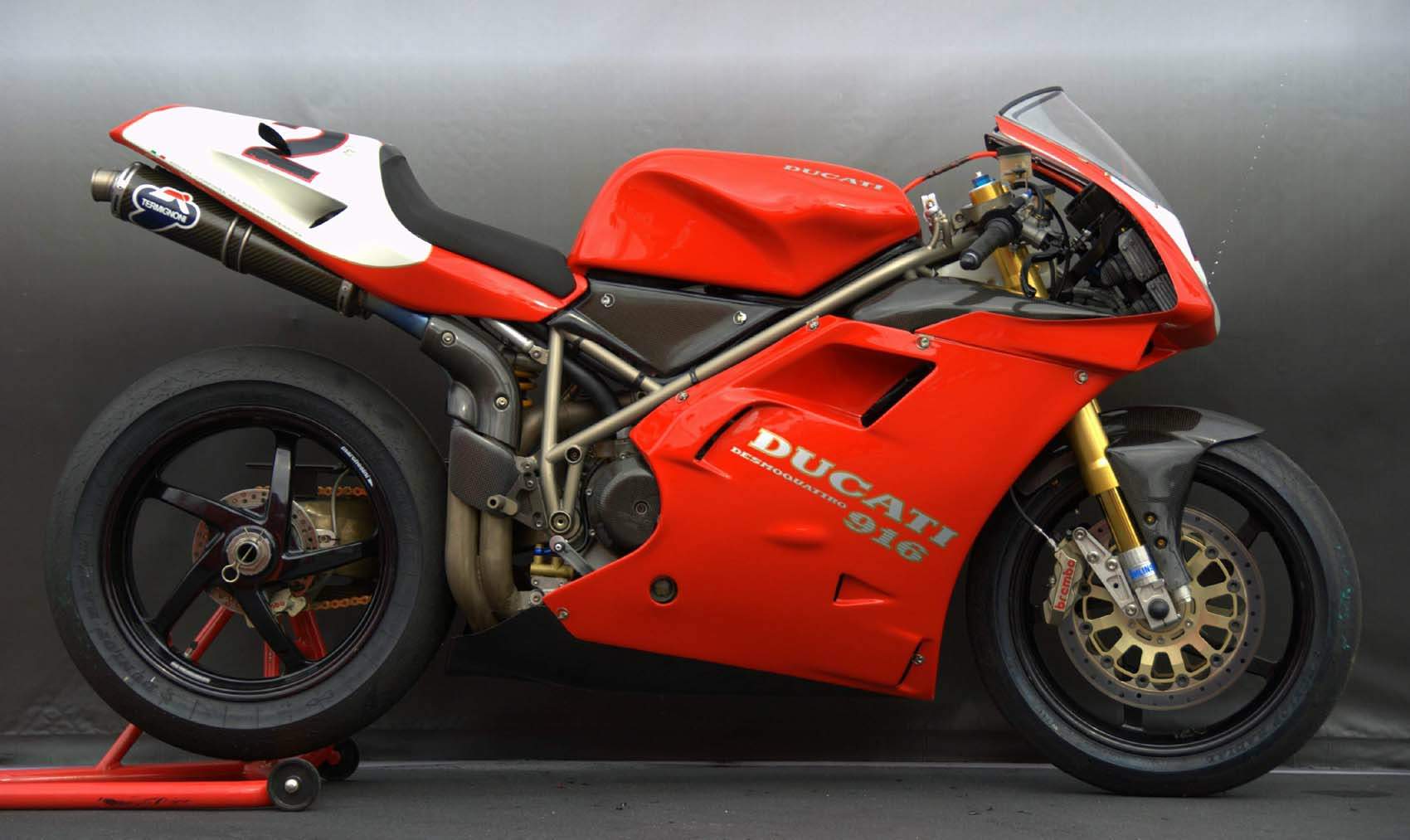The Ducati Superbike 916 is more than just a motorcycle—it is a symbol of Italian craftsmanship, groundbreaking engineering, and racing supremacy. Launched in 1994, this superbike revolutionized the motorcycle industry with its combination of stunning aesthetics, track-worthy performance, and technical innovation. It remains an icon in both motorcycle history and motorsport culture.
The Birth of a Legend
The early 1990s saw Ducati striving to create a machine that would dominate the World Superbike Championship and redefine sportbike design. The result was the Ducati Superbike 916, a motorcycle that combined raw power with refined beauty. Designed by the legendary Massimo Tamburini, the 916 made an immediate impact on both the street and the track.
Design Excellence
Italian Aesthetics with Functionality
The Ducati Superbike 916 is often praised as one of the most beautiful motorcycles ever built. Its sleek, aggressive lines, single-sided swingarm, and underseat exhausts were not just visually striking—they served functional purposes. The bike’s narrow waist and aggressive riding stance offered improved ergonomics for racing, while the aerodynamic bodywork enhanced stability at high speeds.
Innovation in Engineering
Beyond its appearance, the Ducati Superbike 916 was also revolutionary under the fairings. It featured a steel trellis frame, which provided a perfect balance between rigidity and weight. The design allowed for better handling and responsiveness, characteristics that racers and enthusiasts craved.
Speed and Performance
Engine Specifications
At the heart of the Ducati Superbike 916 lies a 916cc, 90-degree V-twin engine capable of producing 114 horsepower at 9000 rpm. This Desmodromic engine featured four valves per cylinder and liquid cooling, making it one of the most advanced powerplants of its time.
Acceleration and Top Speed
The 916 wasn’t just about looks—it delivered adrenaline-pumping performance. It could accelerate from 0 to 60 mph in just under 3 seconds and had a top speed of approximately 160 mph (257 km/h). These figures made it a formidable competitor against Japanese superbikes of the era.
Handling and Braking
The chassis, suspension, and braking system were finely tuned for race-level handling. It featured Showa or Öhlins suspension (depending on the model variant) and Brembo brakes, ensuring excellent control in all conditions. The bike’s razor-sharp steering and cornering capability made it a dream for track riders and professional racers alike.
Racing Heritage
Dominance in World Superbike Championship
The Ducati Superbike 916 quickly proved its worth in racing. Under the skilled hands of Carl Fogarty, Ducati clinched the World Superbike Championship title in 1994, the same year the 916 was released. Fogarty went on to win three more championships with Ducati, making the 916 platform one of the most successful in Superbike history.
Successor to the 888, Predecessor to the 996
The 916 was a direct successor to the Ducati 888, carrying forward its racing DNA while significantly improving on design and performance. It later evolved into the Ducati 996, which carried on the winning legacy with refined updates.
Variants and Special Editions
Ducati 916 SP, SPS, and Senna Editions
To cater to racing professionals and collectors, Ducati introduced several special variants of the 916. The SP and SPS models offered even more power and advanced suspension components. The Senna edition, named after Formula One legend Ayrton Senna, was a tribute to his love for Ducati motorcycles and featured unique color schemes and premium components.
Limited Production Runs
Due to its iconic status, many of the Ducati Superbike 916 variants were produced in limited numbers, increasing their value over time. Today, owning a well-preserved 916—especially a special edition—is considered a prized possession among collectors.
Cultural and Historical Impact
A Design Icon
The Ducati Superbike 916 is often displayed in design museums and exhibitions for its aesthetic significance. Its influence can be seen in later sportbike models not only from Ducati but from competing manufacturers who tried to replicate its winning formula.
Legacy in Motorcycling
The 916 marked a turning point for Ducati as a brand. It helped reposition Ducati as a major player in global superbike markets, ensuring financial stability and opening the door to more aggressive R&D for future models.
Why the Ducati Superbike 916 Still Matters
Even decades after its release, the Ducati Superbike 916 continues to be revered by riders, designers, and racing fans. Its design remains timeless, and its performance, though surpassed by modern technology, is still highly respectable. More importantly, it laid the groundwork for Ducati’s dominance in superbike racing and its reputation as a manufacturer of elite motorcycles.
Collectors, vintage racers, and enthusiasts often seek out the Ducati Superbike 916 for restoration or admiration. Whether on display or still screaming through twisty roads, the 916 remains a symbol of performance and passion.
Conclusion
The Ducati Superbike 916 is far more than just a motorcycle—it is a piece of motorcycling history that continues to inspire awe and admiration. With its groundbreaking design, ferocious performance, and rich racing heritage, the 916 redefined what a superbike could be. It remains a benchmark not only for Ducati but for the entire motorcycle industry.
From its debut on the racetrack to its iconic status in the world of design and engineering, the Ducati Superbike 916 has left an indelible mark. For riders and collectors alike, it represents the perfect fusion of speed, style, and spirit.







0 Comments